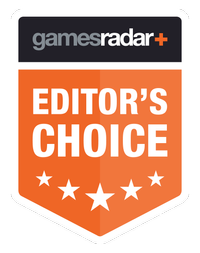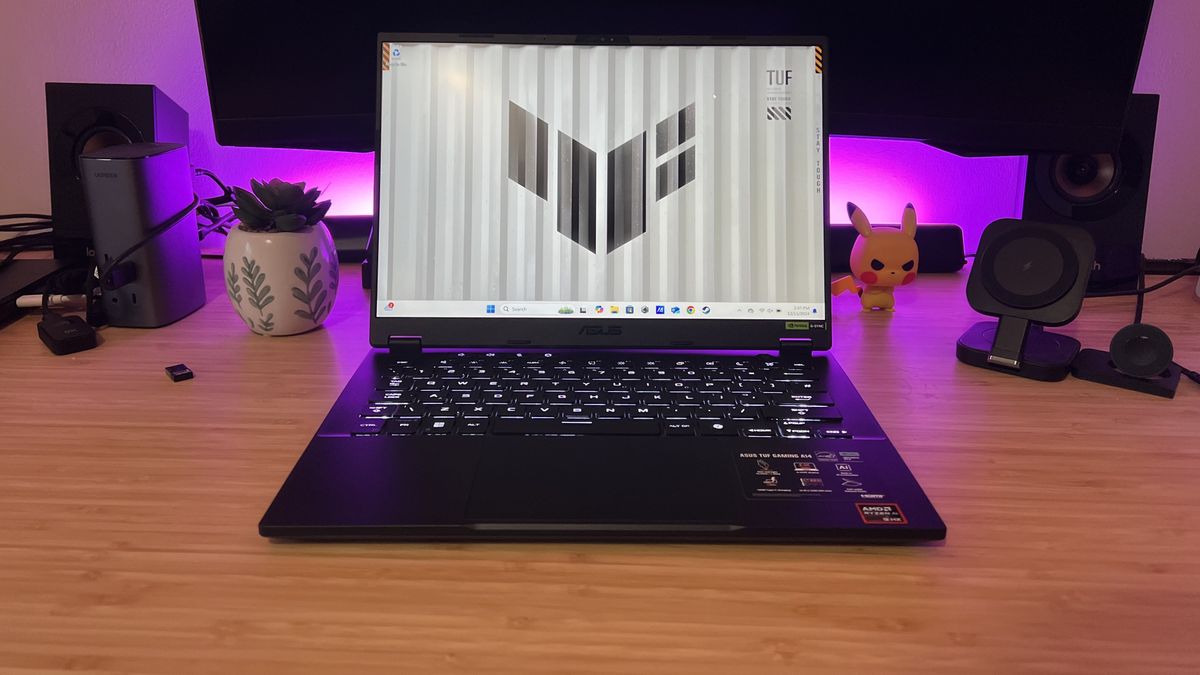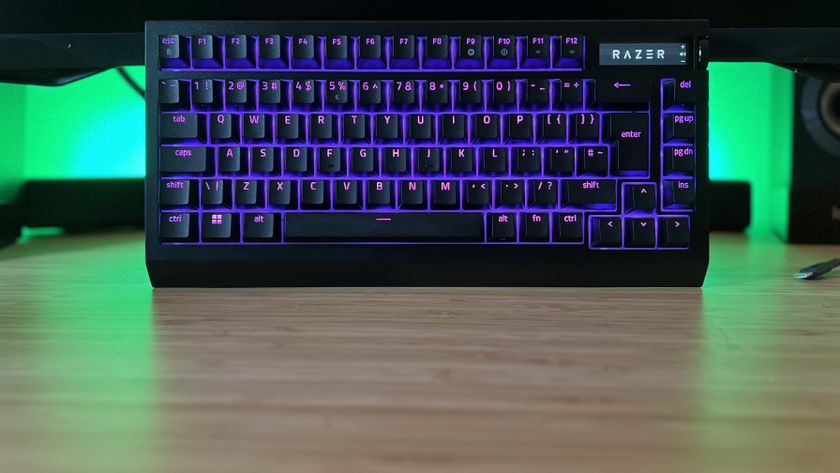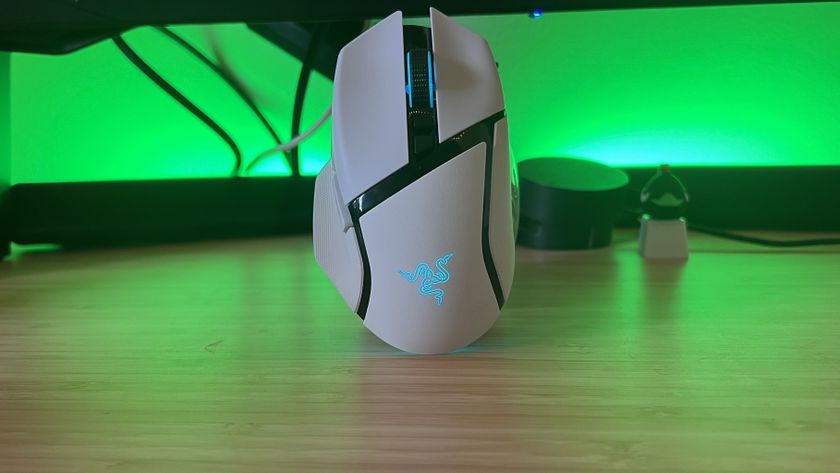12DOVE Verdict
The Asus TUF A14 is a wonderful step towards a portable and powerful future. While it doesn’t quite knock the Zephyrus G14 off its pedestal, it’s a must-see for players on a stricter budget. The powerful AMD AI CPU pulls a lot of weight in bringing impressive performance to a portable form factor here, but the display, super slimline design, and excellent build all feel like a new direction for hybrid machines.
Pros
- +
Turbo-powered CPU
- +
Excellent price
- +
Sturdy, refined build
- +
Bright, crisp QHD display
- +
Super slimline design
- +
Portable form factor doesn’t sacrifice too much power
Cons
- -
One zone white keyboard backlighting
- -
Taps out at RTX 4060
- -
No Thunderbolt
Why you can trust 12DOVE
I’ve always been a big fan of the Asus ROG Zephyrus G14, the brand’s go-to machine for slimline portability while still looking and feeling great in the hands. The TUF series just whisked the G14 off that throne. A latecomer to Asus’s 2024 slate, this 14-inch AMD device looks like a previous generation Zephyrus with the price tag of a modern lower mid-range rig.
The Asus TUF A14 is one of the few compact gaming laptops released in 2024, but it’s a growing contingent and a key battleground for brands looking to provide hybrid work / play machines. With HP, Acer, and Razer all bringing smaller machines to market in more recent years, the competition is heating up. The latest generation looks a little different, though.
Those sacrifices in performance that previously held the form factor back are less noticeable with Nvidia’s 40-Series GPUs and upscaling tech and are certainly erased from memory with this monster of an AMD CPU under the hood. Slotting into a well-respected budget-minded lineup (the Asus TUF A15 remains the best gaming laptop in this price range to this day), the TUF A14 takes a step away from the lumbering, slightly cheap-feeling rigs of yesterday. Instead, this feels, looks, and runs every bit as premium as more expensive options while making some smart cutbacks to keep that cost low.
| Row 0 - Cell 0 | Tested | Also Available |
| Price | $1,499.99 / £1,799.99 | $1,399.99 / £1499.99 |
| Display | 14-inch QHD+, 165Hz | - |
| Processor | AMD Ryzen AI 9 HX 370 | AMD Ryzen 7 8845HS |
| GPU | Nvidia RTX 4060 | - |
| RAM | 32GB LPDDR5 | 16GB LPDDR5 |
| Storage | 1TB SSD | 2TB SSD |
| Connectivity | WiFi 6E, Bluetooth 5.3 | - |
| Ports | 2x USB 3.2 Gen 2 Type-A, 1x USB 3.2 Gen 2 Type-C with DisplayPort, 1x Type-C USB 4 with DisplayPort + Power Delivery, 1x HDMI 2.1, 1x MicroSD card reader, 1x 3.5mm audio | - |
| Dimensions | 0.7 x 12.2 x 8.9 inch | - |
| Weight | 3.2lbs (1.45kg) | - |
Design
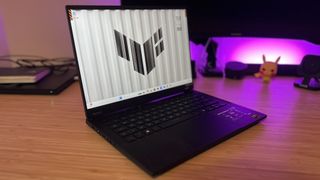
The Asus TUF A14 bears a striking resemblance to my old TUF Dash F15, with its slate aluminum top lid, skinny silhouette, and squared-off profile. It was that subtle, streamlined design that originally drew me to the TUF Dash series in the first place, and I’m delighted with its evolution to the smaller A-Series machine. It’s a more subtle design than the Asus TUF A15, dropping the harder angular lines and embossed elements on the lid while removing all that cringey text from the internal palm rest area. Instead, this is a slick machine that could easily pass for an ultrabook in more professional settings, only a small TUF-stamped logo in the top corner gives these gaming roots away.
You’re not getting the CNC-milled unibody chassis of the more expensive G14, which means the plastic casing in the lower half can feel a little cheap under the hand. But this is a cheaper laptop, and these materials still feel dense and solid - far more than I can say for most budget machines. The palm rest has a little give to it, but I could only notice it when directly pushing, and the screen hinges run smoothly without a creak in earshot. These hinges are relatively small - you’ll find a much more robust system in the Razer Blade 14, which uses a full-length hinge to ensure smooth and stable operation. The A14 is, however, MIL-STD 810H certified, able to survive shocks and drops as well as a range of temperatures and humidities. It doesn’t get much TUF-er than that in the gaming laptop world.
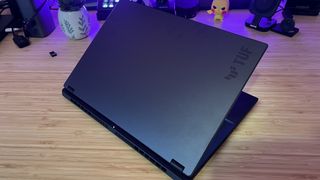
While Razer and the Zephyrus line will give your laptop that polished sheen in their higher-quality build materials, though, you’ll be sacrificing a little portability to get there. At 3.2lbs, the Asus TUF A14 is among the lightest gaming laptops on the market. It’s lighter than the HP Omen Transcend 14 (3.59lbs) and that machine is so tiny it feels like a Chromebook at times. That’s already impressive for a budget rig, but the key thing here is that it carries that weight so well. That low weight never feels cheap and there’s still a density to the chassis as a whole that ensures a luxurious, reliable experience. At 0.7inches, it’s ever so slightly thicker than the Zephyrus - but considering we’re talking about 0.1 inches the difference is pretty negligible. I still happily traipsed through the city with this thing on my back without noticing a thing.
Features
Things get real interesting under the hood. The Asus TUF A14 packs AMD’s AI-forward CPU, the Ryzen AI 9 HX 370. This is the first machine I’ve tested with this brain at the center and Strix Point is impressive. The chipset is based on the brand’s latest Zen 5 architecture, pulling 50 TOPS (trillions of operations per second, the main measurement of AI performance) through its XDNA 2 neural processing unit.
In short, it’s one of the latest processors to hit the mobile market and is able to run dedicated AI systems on your PC incredibly quickly, while also lending its power nicely to raw traditional gaming performance as well. Not everyone is going to need that AI boost - in truth, there are still only very few real uses for it day to day, but hey I’ll take more power in a budget machine wherever I can take it. If you don’t want to spend on the flashy new CPU, the A14 is also available with a classic AMD Ryzen 7 8845HS CPU.
Asus isn’t skimping on the rest of its components either, with either 16GB or 32GB RAM available and up to 2TB of SSD storage space. There’s even a spare bay for storage upgrades further down the line, and a handily simple 11-screw process for removing the back plate and diving inside. While the Zephyrus G14 can run an RTX 4070 GPU, however, the A14 is limited to a weaker RTX 4060 graphics card. That means this isn’t necessarily a framerate chaser, though performance in this series is still strong enough to play at fullspeed in 1080p and run lighter games well at QHD+.
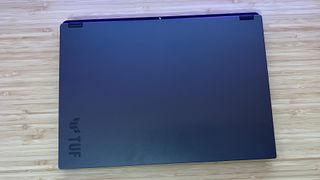
Both configurations of the Asus TUF A14 ship with the same 165Hz QHD+ display, swapping the luxury contrast and vibrancy of the Zephyrus’s HDR-enabled OLED panel for a cheaper but actually brighter IPS-level panel. It’s faster as well, with the 120Hz OLED on the G14 feeling a little more sluggish in Nvidia-friendly games running at 140+fps in 1080p. Everything is zippy, well-balanced, and impressively well-contrasted here, making this display as good as far more expensive machines I’ve tested in the past.
Underneath the display you’ll find a well-spaced keyboard with a surprising amount of depth to each keystroke. Thinner laptops like this usually keep their typing experiences fairly shallow, with between 1mm and 1.5mm travel distances. The 1.7mm actuation here feels satisfying and tactile, proving both accurate and speedy during gameplay and typing. There’s a bouncy snap to each press, with an energetic debounce that still manages to feel crisp in faster gameplay scenarios as well. I’m not a massive fan of the single-zone (and un-programmable) white lighting, especially seeing as it bleeds pretty heavily around these chiclet keycaps when not viewed directly overhead.
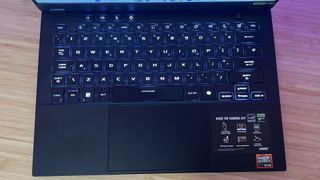
A generously sized glass trackpad spreads across the center of the palm rest area, providing a smooth glide and responsive tap clicks. Actual pressure clicks are a little heavier than I would like, but I rarely push down on the pad anyway.
While many 14-inch gaming laptops adopt a more streamlined approach to their ports, the Asus TUF A14 goes all-out on connectivity. This is impressive in such a small laptop, but size isn’t holding anyone back when it comes to accessories. The left flank houses an HDMI 2.1 as well as a single USB-C with power delivery baked in, a single USB 3.2 Gen 2 USB-A, and a 3.5mm audio jack.

Meanwhile, the right offers a second USB-A as well as a USB-C with DisplayPort functionality (though no power delivery) and MicroSD card reader. That’s the same port selection as you’ll find on the Asus ROG Zephyrus G14, and very similar to that of the Razer Blade 14 though substituting one of the USB4 Type-C connections for a 3.2 Gen 2 Type-C and adding a MicroSD card. Unlike the HP Omen Transcend 14, there’s no Thunderbolt 4 support here.
Performance
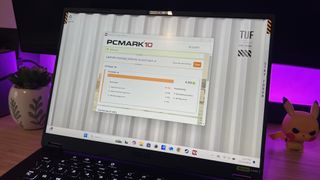
I’m primarily pitting the Asus TUF A14 against three of its 14-inch contemporaries and its larger 15.6-inch sibling, and while the Asus ROG Zephyrus G14 and Razer Blade 14 both have the RTX 4070 working in their favor, the A14 isn’t exactly out of this race. In easier titles like FHD Shadow of the Tomb Raider, the extra grunt in that CPU helped push it to the top of the pack, beating laptops well out of its price range in in-game benchmark scores.
It behaves a little more as I would expect when it comes to more demanding games. It left the HP Omen Transcend 14 in the dust across both Returnal and Total War: Three Kingdoms in 1080p, and still edged out in the lead between the two 14-inch RTX 4060 models in QHD as well. However, it’s the smaller difference between the RTX 4070 Razer Blade 14’s numbers and the A14’s that has me particularly excited. The A14 only lagged by a couple of frames per second in Total War: Three Kingdoms - impressive considering the Blade 14 not only has an RTX 4070 at the helm but also costs double the price.
The same pattern emerged between the Asus ROG Zephyrus G14 and the A14 in Returnal. Yes, the A14 struggled to hit over 60fps in Epic settings, but it was only five frames behind the G14 and in High that gap was shrunk to just three frames. The Asus TUF A14 is performing far higher than I would expect from a slimline RTX 4060 configuration.
That’s noticeable in synthetic GPU benchmarks as well. A 9,972 Time Spy score and 23,694 Fire Strike score puts the A14 at the very top of its class, thrashing the HP Omen Transcend 14’s 7,913 / 18,000 scores and just bumping against the RTX 4060 Asus TUF A15 - a device sitting within a much larger chassis.
The AMD Ryzen AI 9 HX 370 absolutely ripped through PC Mark 10 and Cinebench R24 benchmarks, scoring miles ahead of its competitors. That’s an insane jump in CPU performance - the likes of which I haven’t seen in the year’s processors to date. That’s some seriously impressive productivity performance, which easily translates to more versatile gameplay performance as well. The best part about this processor might not even be its raw power, though. It may just be the efficiency of that chip.
This is one of the first gaming laptops I’ve been able to work all day using battery power alone. I was shocked when I realized I’d never needed to reach into my backpack and find an outlet while tapping away on Chrome tabs and the odd image processor outside of the house. This machine packs the all-day battery of an ultrabook with internal components to punch above its weight in gaming performance as well. That’s an exciting combination - if this is the way Asus is going with its hybrid devices, I’m certainly on board.
Should you buy the Asus TUF A14?
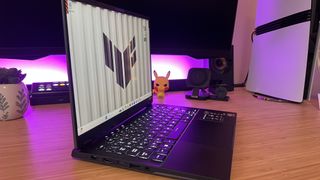
There are two machines currently standing in the Asus TUF A14’s way. The Asus ROG Zephyrus G14 is a better 14-inch gaming laptop if money is no object. It’s configurable up to a higher RTX 4070 GPU, packs a boosted OLED display for better vibrancy and contrast, and is built with more premium materials. The Asus TUF A15 is a better budget pick - often much cheaper than the A14 and with more configuration options to work around that lower price point as well. But the A14’s CPU power goes above and beyond that of the G14, it’s already geared up to take advantage of AI enhancements, and its slimline design remains just as portable and streamlined as the more expensive model.
The A14 isn’t too far behind the A15 in price - and it’s got a lot more going on under the hood for your cash, with a brighter 16:10 screen running at a higher QHD resolution and faster 165Hz refresh rate, and more satisfying keyboard. There’s a lot of gray area between these models, but suffice it to say, if you want a rig that’s going to look and feel better than the Asus TUF A15 but you don’t want to reach Zephyrus G14 levels, this is exactly where you should be looking.
The HP Omen Transcend 14 is under threat from this impressive rig as well. Before reviewing the A14, the Transcend was my favorite slimline machine on the market. That’s just been turned on its head. While the OLED panel and super slick design of the Omen is still going to keep it in favor with those after a luxury display and subtle design, there’s just far more power in the A14’s chassis and it’s still within the same dimensions as HP’s entry. After all, it’s just as thin, slightly lighter, and offers a considerable boost in performance.
How I tested the Asus TUF A14
I used the Asus TUF A14 for three weeks, running daily work and play on the machine the entire time. I primarily tested with the machine running solo on a desk, but spent a week plugged into a separate dock / monitor setup as well. I also tested across two working from different coffee shops and more temporary setups, and travelled with the machine regularly. I performed benchmark tests in both 1080p and 1440 / 1600p at High and Highest graphical settings in Shadow of the Tomb Raider, Total War: Three Kingdoms, Returnal, and The Talos Principle 2. Synthetic benchmarks were then recorded across 3D Mark Time Spy, Fire Strike, and Steel Nomad, with dedicated CPU tests performed in PC Mark 10 and Cinebench R24. Outside of direct testing, I used the laptop to play Hogwarts Legacy, Fallout 4, Snowrunner, Forza Horizon 5, and Final Fantasy XVI. For more information on how we test gaming laptops, check out the full 12DOVE Hardware Policy.
You’ll find plenty more of the best Asus gaming laptops on the market right here, as well as all the best Alienware laptops and the best Razer gaming laptops as well.

Managing Editor of Hardware at 12DOVE, I originally landed in hardware at our sister site TechRadar before moving over to GamesRadar. In between, I've written for Tom’s Guide, Wireframe, The Indie Game Website and That Video Game Blog, covering everything from the PS5 launch to the Apple Pencil. Now, i'm focused on Nintendo Switch, gaming laptops (and the keyboards, headsets and mice that come with them), PS5, and trying to find the perfect projector.
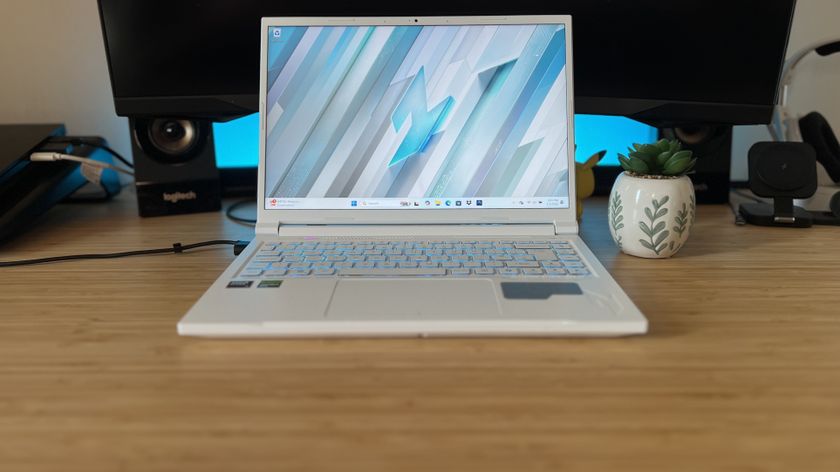
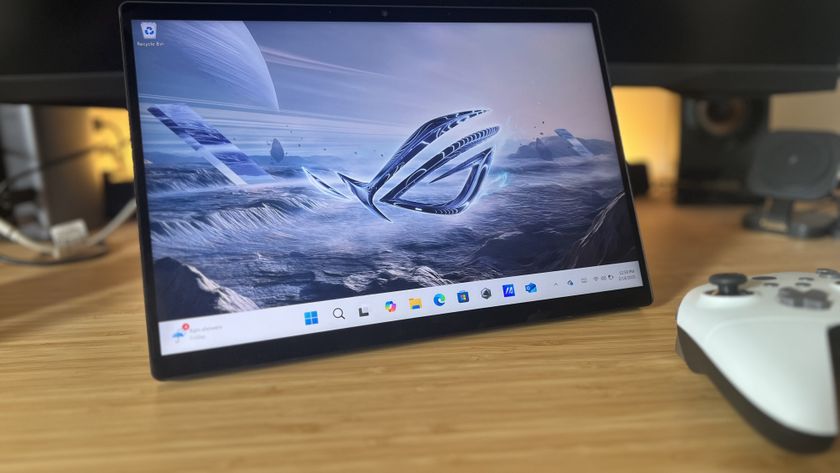
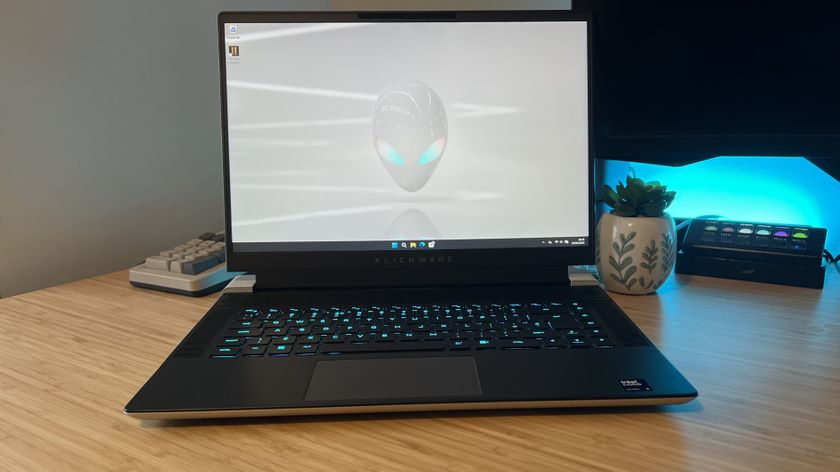
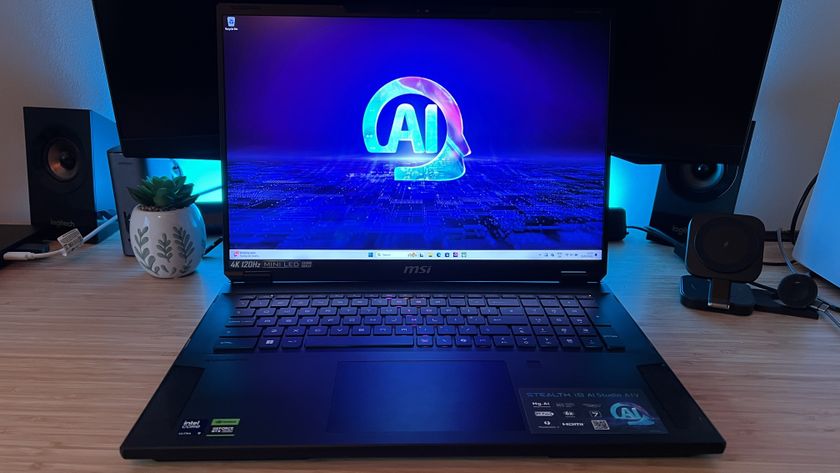
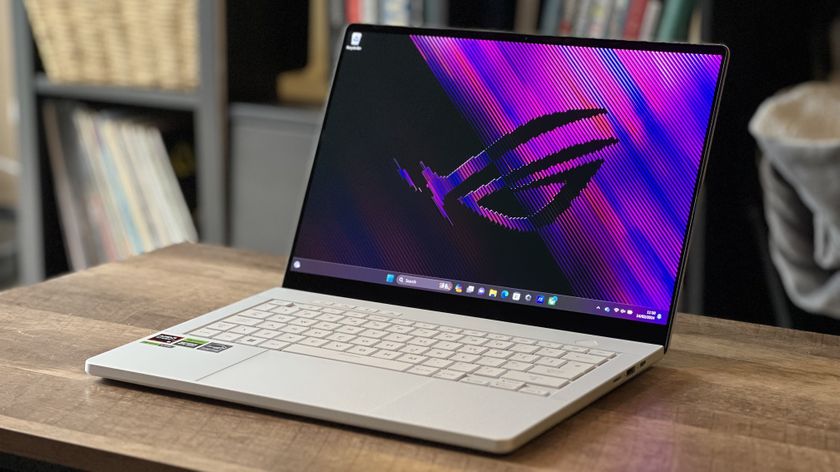
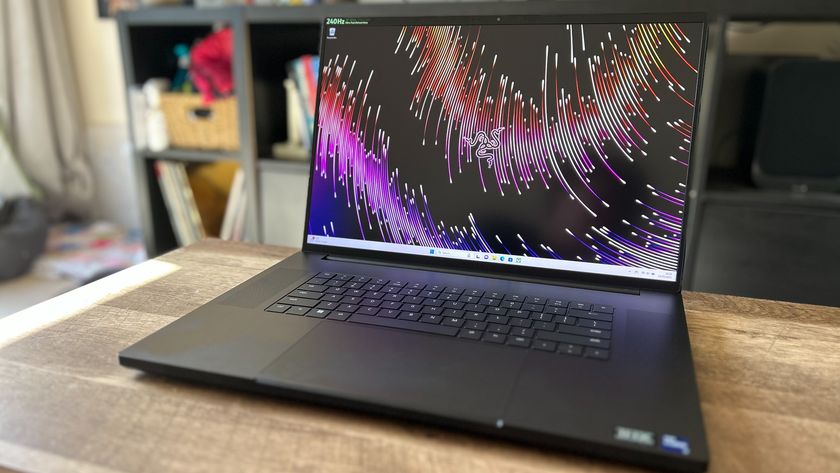
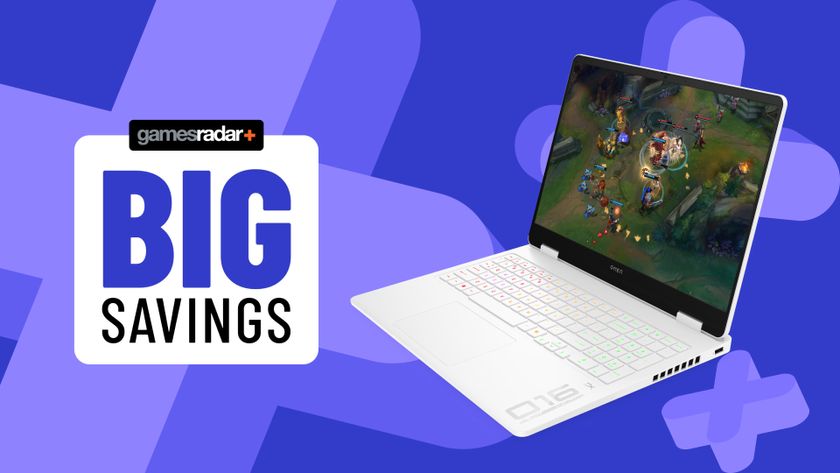

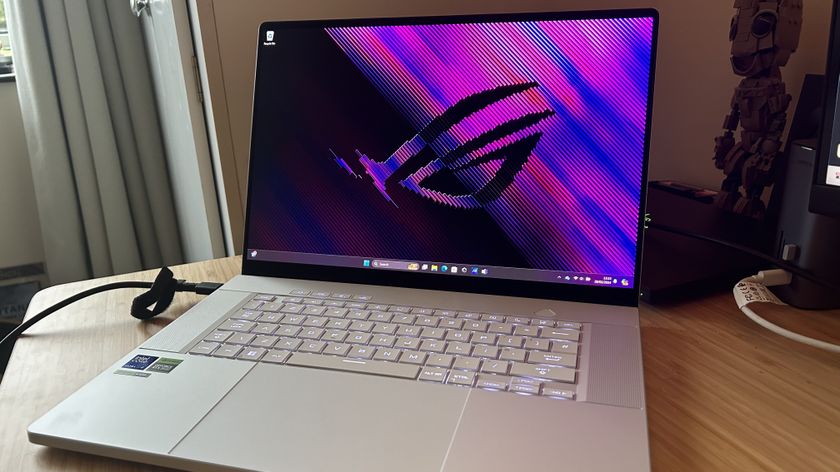

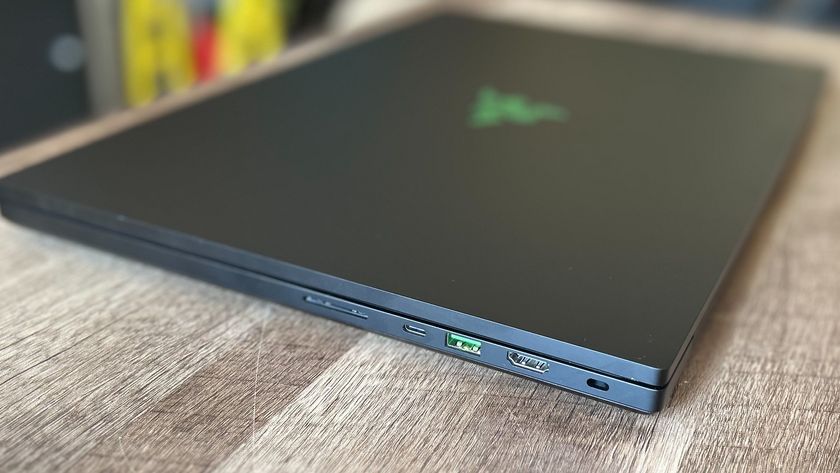
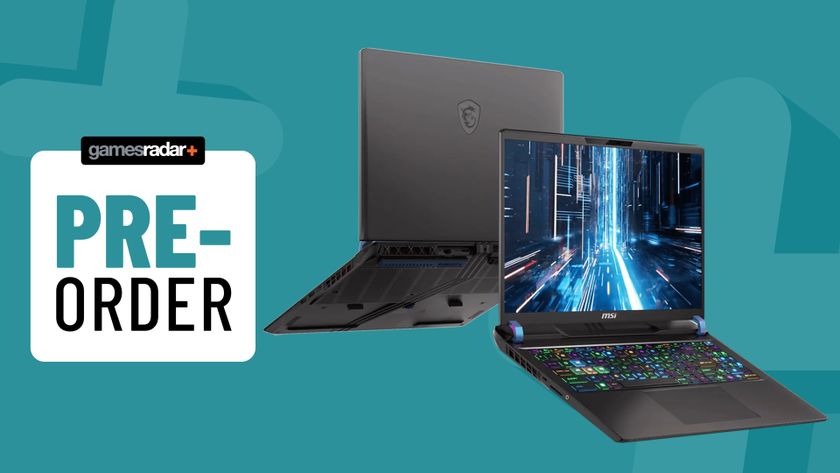







When Destiny 2 "weekly active users dropped lower and faster than we'd seen since 2018," Bungie assembled an A-Team to put out some fires: "We needed to do something"

The Handmaid's Tale will go back to basics with a "classic" series finale that's been years in the making

Netflix is rebooting Scooby-Doo as a live-action series from the producer of Supergirl and The Flash centered around a "supernatural murder" at a summer camp
